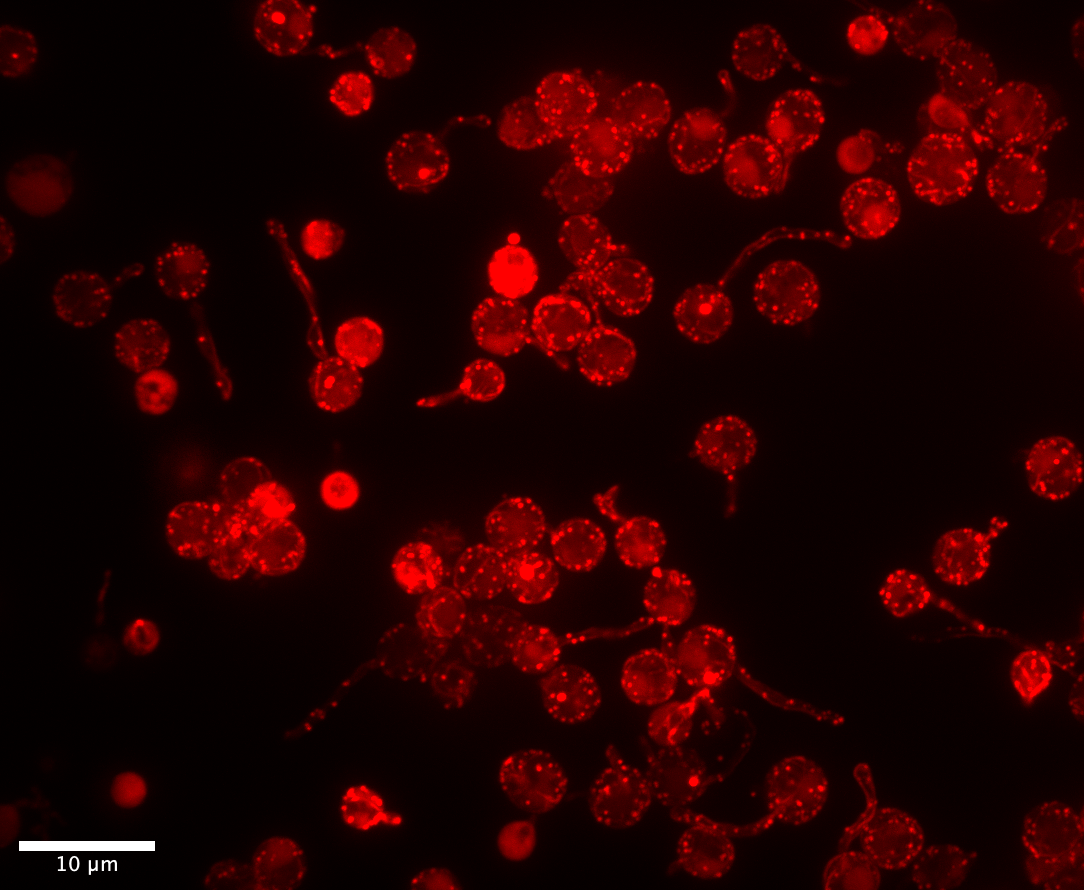
Chytrid Papers
This is a list of foundational chytrid papers that might be of interest to newcomers to the field. Many additional published papers can be found on Pubmed and Google Scholar, and preprints on bioRxiv. If you think there is a paper that should be added to this list, please use the form below!
General Fungal Biology and Systematics
Phylogenetic taxon definitions for Fungi, Dikarya, Ascomycota and Basidiomycota.
This short and useful description of the current definitions and classification of the main fungal lineages is a helpful primer for navigating fungal literature.
https://link.springer.com/article/10.5598/imafungus.2018.09.02.05
Chytridiomycosis
Life cycle stages of the amphibian chytrid Batrachochytrium dendrobatidis
Lee Berger, Alex D Hyatt, Rick Speare, Joyce E Longcore
Foundational description of Bd morphology and lifecycle.
https://pubmed.ncbi.nlm.nih.gov/16465834
Recent Asian origin of chytrid fungi causing global amphibian declines
Most comprehensive look at the population genetics of Batrachochytrium dendrobatidis
https://pubmed.ncbi.nlm.nih.gov/29748278
Batrachochytrium salamandrivorans sp. nov. causes lethal chytridiomycosis in amphibians
An Martel, Annemarieke Spitzen-van der Sluijs, Mark Blooi, Wim Bert, Richard Ducatelle, Matthew C. Fisher, Antonius Woeltjes, Wilbert Bosman, Koen Chiers, Franky Bossuyt, and Frank Pasmans
Foundational description of Batrachochytrium salamandrivorans
Chytrid Ecology
Mycoloop: chytrids in aquatic food webs
In this review the authors describe the important role of parasitic chytrids in the carbon cycling of aquatic ecosystems by making available, in the form of nutrient rich zoospores, otherwise inedible phytoplankton.
https://www.frontiersin.org/articles/10.3389/fmicb.2014.00166/full
Discovery of dark matter fungi in aquatic ecosystems demands a reappraisal of the phylogeny and ecology of zoosporic fungi
In this opinion paper, the authors discuss the Dark Matter Fungi (DMF), uncultured and poorly known taxa belonging to early diverging branches of the fungal tree of life.
Early Diverging Fungi: Diversity and Impact at the Dawn of Terrestrial Life
In this review, the authors discuss the diversification and ecological roles of the fungi over their first 600 million years, from their origin through their colonization of land.
https://www.annualreviews.org/doi/full/10.1146/annurev-micro-030117-020324
Chytrid Genomics and Systematics
Leveraging single-cell genomics to expand the fungal tree of life
In this paper the authors used single-cell sequencing of greatly understudied groups of unculturable mycoparasitic early diverging fungi to determine their evolutionary relationships, evolutionary processes acting on non-Dikarya fungi and to determine common metabolic deficiencies that can be used to develop culting technologies to culture these lineages.
https://www.nature.com/articles/s41564-018-0261-0
A molecular phylogeny of the flagellated fungi (Chytridiomycota) and description of a new phylum (Blastocladiomycota)
This paper shows that Chytridiomycota is not monophyletic, and elevates the group of Blastoclad fungi to the level of Phylum Blastocladiomycota. It also finds that the mycoparasitic Rozella stands as a separate lineage (setting the stage for the future “Rozellomycota/Cryptomycota”).
https://www.tandfonline.com/doi/abs/10.1080/15572536.2006.11832616
Chytrids as Transitional Fungal Species
Punctuated Evolution and Transitional Hybrid Network in an Ancestral Cell Cycle of Fungi.
Medina EM, Turner JJ, Gordân R, Skotheim JM, and Buchler NE.
This paper reports the discovery that chytrid fungi have cell cycle regulation that incorporates both fungal-specific and ancestral regulators.
https://elifesciences.org/articles/09492
The actin networks of chytrid fungi reveal evolutionary loss of cytoskeletal complexity in the fungal kingdom.
Prostak SM, Robinson KA, Titus MA, Fritz-Laylin LK
This paper describes the presence of both fungal-specific and ancestral actin regulators and actin structures in chytrids.
Chytrid Molecular Genetics
Genetic transformation of Spizellomyces punctatus, a resource for studying chytrid biology and evolutionary cell biology
This paper outlines Agrobacterium-mediated genetic transformation of the chytrid Spizellomyces punctatus